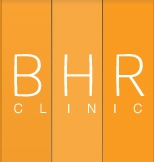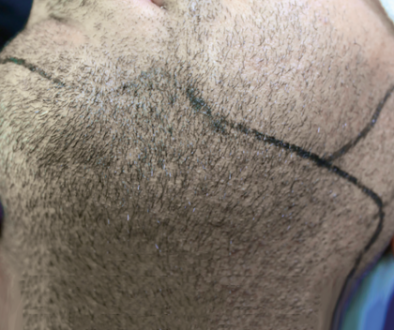Approaching Hair Transplant Clinics and Preparing for Consultations
This question, asked by a member of our hair loss social community and discussion forums, was answered by “sl” – a clinic representative for recommended hair transplant surgeon Dr. Christian Bisanga,
 Once you are at the stage of wishing to gain further information regarding surgical hair restoration, it is usually helpful to have some idea of the type of surgery you are considering, i.e. follicular unit strip surgery (FUSS), follicular unit extraction (FUE) or even body hair transplantation (BHT), then short listing and contacting the clinics that perform the desired surgery is the next step. The price and location of the clinic may also be factors and although important, should not be the overriding considerations when making your decision. The world is becoming increasingly smaller with travel and inexpensive also so making the effort to meet a hair transplant surgeon and visit a clinic/s is worth it.
Once you are at the stage of wishing to gain further information regarding surgical hair restoration, it is usually helpful to have some idea of the type of surgery you are considering, i.e. follicular unit strip surgery (FUSS), follicular unit extraction (FUE) or even body hair transplantation (BHT), then short listing and contacting the clinics that perform the desired surgery is the next step. The price and location of the clinic may also be factors and although important, should not be the overriding considerations when making your decision. The world is becoming increasingly smaller with travel and inexpensive also so making the effort to meet a hair transplant surgeon and visit a clinic/s is worth it.
Most clinics will have an online consultation form or email and can be easily contacted. Remember to send as much information as possible and don’t make the clinic feel as if they are “pulling teeth” in order to get the required information and photos from you. Minimally one should include age, medication, any previous surgery issues, previous or current illnesses, goals and time scales.
Photos sent should show each profile fully, be clear and not grainy, be recent, without any gel or concealer and clearly expose hair loss on front, back, sides and top of the scalp. Use a comb to part the hair if needed to give an idea of density and hair groupings if at all possible. If there have been any previous surgeries then mention as much detail as possible, technique and graft numbers, include any scarring to either the recipient or donor areas and any irregularities known. Also an accurate measurement of any scarring is also useful. Video footage may also be of great help and especially to give an indication of scalp laxity.
Seek to give as much information as possible and not to hide anything. The photos are not opportunities for “selfies” to show how much hair you have or how good you look but an opportunity to get an accurate first appraisal so expose as much as possible to help this. The clinic will keep any and all information confidential so no need for the inquirer to blank out any parts of their face and in fact providing full face photos often ensures a better assessment and will give a better perspective of the hair loss and bone structure types etc.
Once the information has been sent, it is good practice for clinics to respond promptly. If however you have not seemingly received a reply in a timely fashion then be sure to check the spam folder before inquiring again as clinics often respond quickly only for the reply to end up in the wrong folder. So, check and then reply if nothing arrived.
The clinic should give an initial assessment based upon the information and photos supplied and this is usually followed with an option of a personal meeting with the rep or doctor to further discuss your case. This may not always be the case for international inquiries and the doctor may ask for a patient to be seen in person if there are concerns from the initial pictorial evidence.
Try to contact several clinics in order to get a balanced view as to what is needed or recommended. Uploading the case to a forum is another advisable avenue. However, the seeker may wish to remain anonymous in this situation and therefore cropping or editing the photos to some degree may be needed here.
Usually once the above processes have been followed, the inquirer will have a good idea as to what is achievable and may then wish to proceed with a personal consultation.
The Consultation
If and when a consultation has been arranged, make sure you give yourself plenty of time to arrive, to be assessed and to travel home. Bear in mind that the doctor may also be performing surgery on other patient/s that day, so possible delays in being seen should also be considered when making return travel plans. The consultation as such should take approximately thirty minutes for the doctor’s hands on works to be done and questions answered, some may take longer.
Make a list of questions beforehand that you wish to ask once there. It may be helpful to email these to the clinic beforehand so that the clinic may prepare the answers in anticipation of the consultation and indeed will ensure the whole process is more productive and efficient. Many clinics will have an extensive open dialogue prior to the consultation stage in order to answer as much as possible prior to the consultation itself, thus making the consultation more productive for both parties and avoiding the going over of basics that should have been aptly dealt with by this stage.
When you attend the consultation, make sure your hair is free from any gel and concealer so that the assessment can be accurate. If you do wear any such products while traveling then make sure to wash off before the consultation and re-apply after if need be. Hair should not be shaved to the bone, try to have at least 3mm of length if possible and be prepared to remove any hair systems also prior to attending.
There is usually a pre-consultation form to be filled out upon arrival in order to give the doctor as much medical history and information as possible before the consultation takes place. Please be honest and open with regard to all questions as your information is all that the doctor is privy to. They are not mind readers, so correctness here is vital. The consultation should be relaxed yet informative and well worth the effort in attending. It should not be like a game of chess whereby the atmosphere is one of a battle, but moreover, trusting, honest and open from start to finish while seeking to work together.
Some clinics will “snip” the donor region in several places with scissors in order to read the densities in the various donor regions and this is something that Dr. Bisanga is known for, in order to get accurate information and to view the donor under magnification. The snips are very small and easily disguised so should not be of concern. Usually density is measured and seen on a screen display and is recorded and documented. Laxity is also usually considered, and especially so if strip is to be the principal surgery type. The doctor will also typically look for any miniaturization in the donor or recipient areas and also and where relevant proceed to design aspects and graft numbers. Technique will be discussed. At this point, it is prudent to also photograph any design, so that there is a clear record of what is drawn as this can be easily forgotten afterwards. Make sure any design is washed off prior to departing using an alcoholic swab. The doctor will also write a summary with measurements taken for hairline design etc.
Surgery costs, numbers of days needed for the surgery and possible dates may also be discussed, as well as your questions answered. It is then common practice for a post consultation summary to be sent to the inquirer.
If any of your questions are left unanswered at this stage then do not panic, there will be a follow up dialogue via emails or phone calls in order for any outstanding questions to be covered. Some may find it helpful to record the consultations in the form of an audio recording and this is usually agreeable, but wise and courteous to ask the clinic for permission before doing so.
Try to have several consultations and, if possible, get the most out of your trip if going overseas to visit a clinic. Search if there are any other reputable clinics nearby that may also be visited. All of this will take organization so sufficient time needs to be dedicated to planning. Some clinics will be booked up months in advance, so ensure to contact any prospective clinic early in order to plan your schedule.
Once a consultation has been given, please be aware that the findings will have a shelf life as such. If more than six months passes from the time of the original consultation then the clinic may ask for new photos or another consultation in order to re-assess your situation and requirements before offering prospective surgery.
The consultation will not only provide you with the required medical data, but will give you a feel for the doctor and the clinic. You may also be able to see an example of the clinic’s work, if there are reps available in the clinic that have themselves undergone surgery. It is unlikely you will be able to see any live surgeries as such, although most clinics will be able to provide ex-patients for you to meet in person prior to surgery.
If there has been considerable time and expense spent in attending the consultation then the clinic may also, in good will, offer a slight discount on any prospective surgery in order to cover some of the associated costs of the visit. BHR Clinic offers this as we recognize the effort and costs incurred by the prospective patient. A clinic charging for a consultation is becoming more of a rarity but any such payment is usually put towards the surgery costs, should the inquirer as such proceed with the surgery. You would need to check such detail with respective clinics.
Lastly, consultations should be without any obligation or pressure to proceed to surgery and we indeed as a clinic pride ourselves on our reputation for giving good, honest advice to the seeker in a professional yet relaxed atmosphere. The inquirer should leave the consultation with more knowledge regarding their own personal situation and will have the specific date needed in order to make an informed decision or access to the information needed post consultation.
All the best for those going through this process.
sl
Clinic representative for Dr. Christian Bisanga
—-
David (TakingThePlunge)
Editorial Assistant and Forum Co-Moderator for the Hair Transplant Network, the Coalition Hair Loss Learning Center, and the Hair Loss Q & A Blog.
To share ideas with other hair loss sufferers visit the hair loss forum and social community
Technorati Tags: hair restoration, follicular unit strip surgery, FUSS, follicular unit extraction, FUE, body hair transplantation, BHT, hair transplant surgeon, hair loss, hair systems



